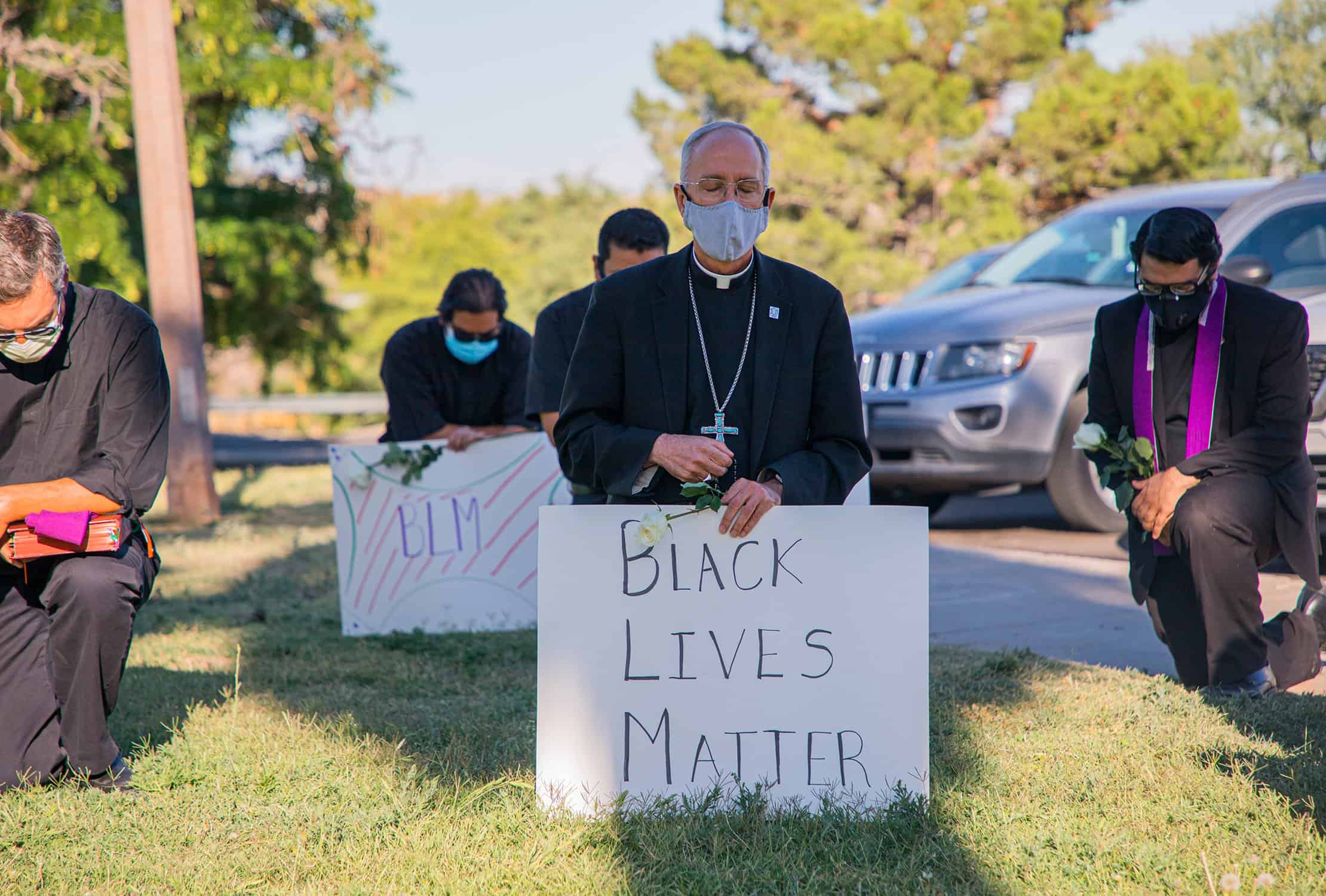In my three years of teaching Catholic Social Teaching to high school juniors, white students frequently asked, “Why do you make everything about race?” It was a question I had asked at their age as well. In response, I attempted to offer some of the overwhelming statistical and historical evidence, but many of them were indeed overwhelmed by the sheer volume and preferred easier, less-challenging answers. I missed a pedagogical opportunity.
I wish I had asked them, “What’s spurring that question?” or “What causes you to ask that?” Given the latest surge in white attention to racial injustice, I think both questions are worth addressing: “What’s motivating that question?” and “How does race impact everything?”
****
What’s motivating that question?
Upon reflection, I realized that whenever I asked someone, “Why do you always make it about race,” my real intention was to disrupt the conversation. I remember feeling cornered by the evidence, so I tried to spoil the dialogue rather than engage and learn. The question was a logical fallacy, a circular argument from ignorance. It was a desperate attempt to deny the realities of racism.
Systemic and cultural racism confronts American mythology. America’s national mythology lauds individualism rooted in equal opportunity, one’s own hard work being the reason for one’s success. If systemic racism is real, however, the individualism myth quickly starts unraveling.
White Americans did not achieve the American Dream merely by our own hands. I did not get to where I am in life only because of the hard work I have put in. Most white Americans haven’t. White families built generational wealth because federal, state, and local legislation ensured it. White people designed laws and cultures at the expense of individuals and communities of color. This is not to say that white people have not worked hard or there are no white people experiencing poverty. Rather, it recognizes that white people have had barriers removed for them and we have created barriers for people of color.
Moreover, racism is not merely individual prejudice, so we cannot rely on self-improvement, or pulling oneself up by the color-blind bootstraps. White people are collectively responsible for undoing racism. This is not to say I am at fault for what happened before my lifetime. It is to say that now that I know the realities of systemic racism, I am responsible for challenging them.
“Why do you always make it about race?” is fundamentally about denial. If injustice or other outcomes are impacted by race, then other American myths begin to waver.
****
Is everything about race?
“Why do you make everything about race?” attempts to reduce the argument so as to dismiss it. The faulty logic goes that if we can find one thing not about race, then the whole formula is false. Rather, the argument is better stated, “In the USA, race and racism impact almost every aspect of public life.” Here are a few examples of how race and racism are present in foundational structures of our society:
- The Declaration of Independence states: “[King George] has excited domestic insurrections amongst us, and has endeavoured to bring on the inhabitants of our frontiers, the merciless Indian Savages, whose known rule of warfare, is an undistinguished destruction of all ages, sexes and conditions.” In The Common Cause, Robert Parkinson explores how revolutionary leaders exaggerated and fully fabricated stories of Black and Indian revolts and massacres, all supposedly spurred by the British crown. Revolutionary leaders needed a uniting cause beyond just liberty–racial fear. Racial animosity helped to unite and win the American Revolution.
- In 1862, President Lincoln signed the Morrill Act, creating our modern public college system. The federal government took Indigenous land through a mix of coerced treaties and race-based genocide, subsequently redistributing it to states for colleges. State universities continue to draw endowments and interest from those original land grants. Washington State University, for example, earned $4.5 million last year from timber harvests on their land. The Morrill Act coincided with the Homestead Act and the subsidizing of the Transcontinental Railway via the Pacific Railway Act. Together, these three acts dispossessed indigenous communities of tremendous wealth and cemented inequality.
- More recently, redlining, interstate highways, and gentrification have greatly and disproportionately impacted communities of color. Redlining comes from the 1930s policy of literally color-coding maps of cities for where banks could give out government-backed housing loans. Neighborhoods of color–even prominent, wealthy ones like Sugar Hill—were colored red. Post-WWII, veterans could use the GI Bill to purchase homes at low interest rates. Banks both legally and illegally refused loans to people of color. Because home ownership is one of the greatest drivers of individual and communal wealth, this process segregated neighborhoods, caused massive wealth inequality, and drove future racial wealth inequality. Today, depressed urban centers with communities of color are targeted for interstates and gentrification. Interstates–which allowed for the development of white-dominant suburbs–were developed along economic and racial guidelines. Black neighborhoods were to be sacrificed in order to build roads that primarily served white drivers. Gentrification causes housing prices to skyrocket primarily in urban communities of color, thus driving communities from their homes. These realities impact everything from publication education funding to small business opportunities to police violence.
These are just a few examples. Race and racism impact maternal healthcare, COVID19, access to banking, oil pipelines, environmental justice, and more. Racism is not merely feelings of animosity or prejudice between races. It is the dynamics woven into our political and economic structures meant to disadvantage and disenfranchise communities of color.
****
Ultimately, white people are called to anti-racism, to tear down the barriers to flourishing for people of color. Anti-racism does not mean that suddenly white people are oppressed. It means committing to challenging implicit biases, deconstructing structures, and creating socially just systems. This can seem a daunting task, both because of the sheer prevalence of racist structures and the way in which racism challenges broader beliefs about American identity. But given American commitment to ingenuity, dreaming, and hope, I am sure it is a challenge we can communally face.


